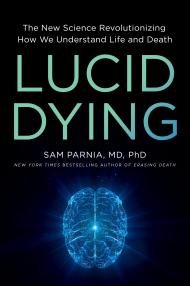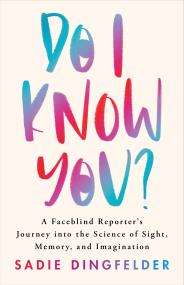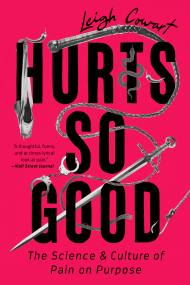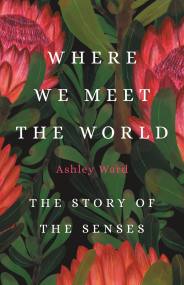Promotion
Shop now and save 20% on your back-to-school purchases & get free shipping on orders $45+ Use code: SCHOOL24
Mapping the Darkness
The Visionary Scientists Who Unlocked the Mysteries of Sleep
Contributors
Formats and Prices
Price
$32.50Price
$41.00 CADFormat
Format:
- Hardcover $32.50 $41.00 CAD
- ebook $16.99
- Audiobook Download (Unabridged) $27.99
This item is a preorder. Your payment method will be charged immediately, and the product is expected to ship on or around October 3, 2023. This date is subject to change due to shipping delays beyond our control.
Also available from:
NEW YORK TIMES EDITOR'S CHOICE SELECTION
"A propulsive, utterly engrossing history… None of it is simple and all of it is captivating."—The New York Times
"Mapping the Darkness offers two narratives at once: a sweeping journey of discovery about dreams, sleep and the terra incognita of unconsciousness; and a wake-up call about the dangers of chronic exhaustion. It’s time, Mr. Miller tells us, to take our sleep back."—The Wall Street Journal
From award-winning journalist Kenneth Miller comes the definitive story of the scientists who set out to answer two questions: “Why do we sleep?” and "How can we sleep better?”
A century ago, sleep was considered a state of nothingness—even a primitive habit that we could learn to overcome. Then, an immigrant scientist and his assistant spent a month in the depths of a Kentucky cave, making nationwide headlines and thrusting sleep science to the forefront of our consciousness.
In the 1920s, Nathaniel Kleitman founded the world’s first dedicated sleep lab at the University of Chicago, where he subjected research participants (including himself) to a dizzying array of tests and tortures. But the tipping point came in 1938, when his cave experiment awakened the general public to the unknown—and vital—world of sleep. Kleitman went on to mentor the talented but troubled Eugene Aserinsky, whose discovery of REM sleep revealed the astonishing activity of the dreaming brain, and William Dement, a jazz-bass playing revolutionary who became known as the father of sleep medicine. Dement, in turn, mentored the brilliant maverick Mary Carskadon, who uncovered an epidemic of sleep deprivation among teenagers, and launched a global movement to fight it.
Award-winning journalist Kenneth Miller weaves together science and history to tell the story of four outsider scientists who took sleep science from fringe discipline to mainstream obsession through spectacular experiments, technological innovation, and single-minded commitment. Readers will walk away with a comprehensive understanding of sleep and why it affects so much of our lives.
-
"The field of sleep science has had a turbulent history: often treated with skepticism, frequently underfunded and filled with restless characters. Miller, a journalist, presents his story with brio and a certain wonder."The New York Times Editor's Choice
-
"Miller's narration of the subject is commanding, bright and deft. His prose cuts and flows through the last century of impossibly complex stop-start progress in measuring and quantifying sleep--why we do it, and how. None of it is simple and all of it is captivating."The New York Times Book Review
-
"Mapping the Darkness offers two narratives at once: a sweeping journey of discovery about dreams, sleep and the terra incognita of unconsciousness; and a wake-up call about the dangers of chronic exhaustion. It’s time, Mr. Miller tells us, to take our sleep back."The Wall Street Journal
-
"This absorbing history ... follows a handful of dogged scientists—a First World War refugee, a pioneering psychiatrist who was once her mentor’s test subject—but also examines the impact of the many researchers whose discoveries have helped to make the treatment of sleep disorders a pillar of public health."The New Yorker
-
“Engrossing…. The impressive work of reportage that is Mapping the Darkness is an impassioned reminder to appreciate the researchers whose work has transformed our slumber—and do our best to give sleep the respect and attention it deserves.”Bookpage
-
"Is there anyone who hasn't—somewhere in the middle of a lost night—pondered the stubborn mystery of sleep? You'll find some of the best answers to that riddle here in Kenneth Miller's book, Mapping the Darkness: an addictively readable history of the scientists who changed our thinking about the nature and necessity of rest itself."Deborah Blum, Pulitzer Prize-winning author of The Poison Squad: One Chemist's Single-Minded Crusade for Food Safety at the Turn of the Twentieth Century
-
“This book is a delight to read! Combining the best of science writing and biography, Kenneth Miller spins a gripping story of how we have come to understand sleep from its basic biology to its impact on personal and public health. I read this book and started going to bed with an entirely new appreciation for what my brain and body do without my assistance.”Daisy Hernández, PEN/Jean Stein Book Award-winning author of The Kissing Bug: A True Story of a Family, an Insect and a Nation’s Neglect of a Deadly Disease
-
"By profiling the daring pioneers of sleep science, this fascinating, magisterially researched, and brilliantly written book pulls back the covers on one of the great mysteries of being human: why we spend a full third of our lives engaged in an activity that scientists are only beginning to understand. You'll never think about something you do every night the same way again."Steve Silberman, New York Times bestselling author of Neurotribes: The Legacy of Autism and the Future of Neurodiversity
-
“In a highly engaging style, Kenneth Miller follows the key researchers who unlocked sleep’s secrets, clarifying the complex science of sleep and its maladies—insomnia, obstructive sleep apnea, and narcolepsy to name a few. Thoroughly researched and admirably rendered, Mapping the Darkness is a must-read for anyone who has thought about sleep or the lack thereof.”Charlotte D. Jacobs, author of Jonas Salk: A Life
-
“In Mapping the Darkness, Kenneth Miller reveals the captivating story of how a quartet of scientists invented sleep science and set the stage for today’s revolt against the epidemic of sleep deprivation caused by school schedules, thirty-hour medical shifts, and the irresistible glowing rectangles we keep on our nightstands. Don’t start reading this book right before bed, or you will be so engrossed you may stay up all night—which can be dangerous to your health.”Laura J. Snyder, author of The Philosophical Breakfast Club: Four Remarkable Friends Who Transformed Science and Changed the World
-
"Mr. Miller has a good eye for a great scientific story."The Economist
-
“The biographical background humanizes the scientific history, and Miller excels at drawing out the real-world implications of the research…Readers will have no problem staying alert through this fascinating scientific history.”Publisher's Weekly
-
"... an interesting examination of an issue that affects us all. Miller shows us how a good night’s sleep came to be recognized as critical for health and development."Kirkus Reviews
-
"... a haunting portrayal of human misery but also of the determined triumphs of researchers who didn’t give a damn about the skepticism of colleagues."New York Sun
- On Sale
- Oct 3, 2023
- Page Count
- 432 pages
- Publisher
- Hachette Books
- ISBN-13
- 9780306924958
Newsletter Signup
By clicking ‘Sign Up,’ I acknowledge that I have read and agree to Hachette Book Group’s Privacy Policy and Terms of Use







